In Dailekh, one of the mid-hills districts of Nepal, Rita Thapa, aged 18, has to wait at least 15 minutes to fetch water from a well due to decreasing water levels in the recent years. Like her, other girls in her community have to spend a significant amount of time collecting water, which means they have to compromise the total time for studying. Springs and wells in Nepal's mid-hills are drying up more frequently, causing worries about water security. Some families even find themselves compelled to abandon their native villages because of the escalating issue of water scarcity. “Our existence relies profoundly on water. “Humans, animals, and plants cannot coexist without water, but water scarcity is becoming a significant problem in Nepal and worldwide. The interlinked issues of water scarcity, climate change, and disasters severely threaten the core of our overall well-being, explains Dr. Umesh Acharya, a Senior Scientist at the Nepal Agricultural Research Council.” To overcome these challenges, it's essential to bring together local and global efforts and take action to implement strong policies that secure our water for the future.
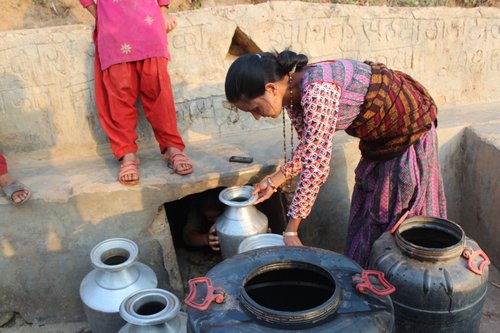
(Picture 1: Woman fetching water from a well near Dailekh bazaar, Karnali Province of Nepal, illustrating the struggle to access clean drinking. Photo Credit: Prem Awasthi: 2013)
Against the backdrop of acute drinking water shortages, different local governments are taking initiatives in recent years. For example, the people of Dharan, a city in the Bhabar region (between Chure hills and the Terai region of Nepal) in Eastern Nepal, as selected Mayor Harka Sampang, through the election in 2021, in hope of resolving water crises. The city has a population of 166,531 and faces a significant challenge of ongoing water shortage. The people in Dharan are joining forces, using their skills and teamwork to tackle this problem. The social mobilization for addressing water shortages and promoting sustainable watersheds has been phenomenal, sending a positive message across the country and nearby Indian towns. The community's efforts to plant trees and conserve watersheds have led to a new conversation about socio-economic development. "The ongoing social mobilization in Dharan for watershed conservation and water security has ignited communities, reshaping the path to a sustainable future. Now all the communities across the county have to act for the secure future of the coming generation and invest in regenerating or conserving the ecosystem," shares Kesu Pant, Assistant Professor at Campus in Birtamod, Jhapa.
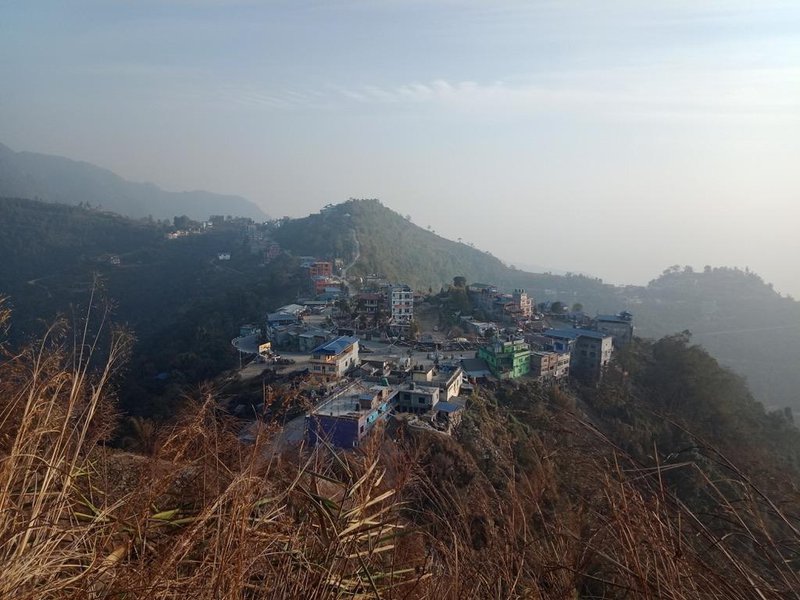
(Picture 2: Bhedetar, the upstream of Dharan Municipality. Photo Credit: Prem Awasthi: 2019)
In Kathmandu, Mayor Balen, who assumed office in 2022, proposed a prompt initiative to replenish the diminishing water table. However, the implementation of this initiative has not commenced, and scientists have issued warnings regarding the severe depletion of the water table in Kathmandu. The Kathmandu Valley is experiencing excessive water extraction, with the extraction rate being six times higher than the recharge capacity, leading to an annual decline of approximately 2.5 meters in the groundwater table.
UNICEF reports that a staggering 3.5 million Nepalese lack access to basic water services, exposing them to waterborne diseases and compromising their overall well-being. Drinking water shortages have intensified challenges girls and women face, particularly in cultural practices where girls are primarily tasked with fetching water in remote and water-scarce areas, adding their drudgeries. The hills of Karnali, Sudur Pashim and the Madhesh province exhibit low socio-economic indicators and a high prevalence of waterborne diseases. Immediately addressing water insecurity could bring good development outcomes, particularly among girls and marginalized communities.
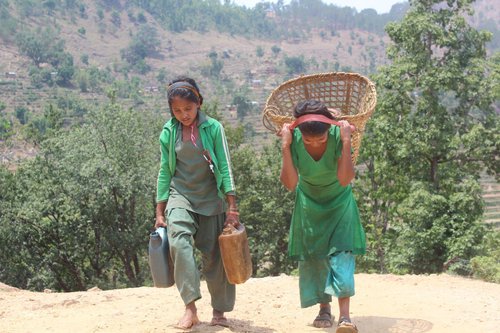
(Picture 3, Girls carrying water in Narayan Nagarpalika, Ward-7, Kimu Gaun, Dailekh, impacting their health and drudgeries. Photo Credit: Prem Awasthi, 2013)
In the agricultural sector, which sustains over 50% of the population, only 19% have access to year-round irrigation. Water scarcity has caused severe drought in Terai during the mid-monsoon season in 2023 because of the drying up of sources in hills and mountains. "The growing water shortages in both urban and rural areas of the Terai region are growing into critical issues. I have witnessed this phenomenon in Parsa, Dhanusa, and Saptari. People are now compelled to dig deeper wells, sometimes exceeding 150 feet, but still unable to access groundwater," laments Punita Mandal, a development worker based in Janakpur.
The rapid pace of the changing climate and increased extreme weather events have exacerbated disasters such as flooding, landslides, windstorms, and lightning. The heavy rainfall in August 2023 in the usually dry area of Mustang and the resulting destruction in Kagbeni watershed area emphasized the need for quick and creative strategies to ensure the safety of people and infrastructure. Similarly, in Terai and mid-hills, every monsoon creates havoc due to the increasing intensity of the flooding and landslides. “A persistent dry spell throughout the year leads to drought conditions. However, when it rains, typically during the monsoon, it becomes alarming with increasingly intense cloud bursts. The changes in rainwater in recent years often cause less recharge but more discharge. As a result, all the accumulated assets and food earned throughout the year are wiped out," says Ram Bilas Yadav of Humanagr Palika in Saptari District. Exploring how we can harmonize these initiatives in climate change adaptation and food security is crucial. Specifically, we must consider methods for preserving excess water or floodwater to address dry seasons effectively. To achieve this, policymakers, researchers, and development workers must engage in collective, holistic thinking and action.
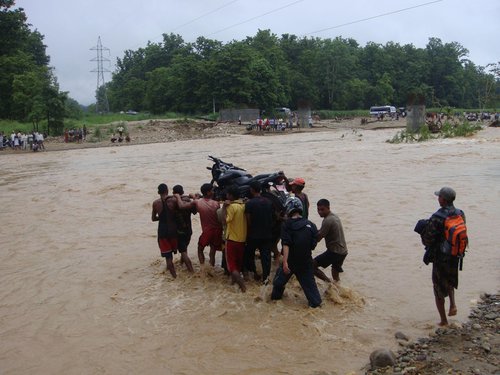
(Picture 4: Flooded dry spring and locals ferrying motorbike at Orahai Khola during the monsoon season along the East-West highway of Bardiya National Park stretch, photo credit: Prem Awasthi, 2013)
In Nepal, the nexus between water scarcity and climate change exacerbates many challenges. With over 50% of farming relying on rainfall, farmers are at the mercy of unpredictable weather patterns. Too little and too much water created many problems. The increasing frequency of extreme events, such as droughts and floods, disrupts the delicate balance required for thriving agriculture, affecting livelihoods and food security. To mitigate and adapt to the increasingly unpredictable weather pattern, the early warning system could help by giving at least some lead time to protect their assets, livelihood, and grain. “For a coordinated approach in addressing the problem of multi-hazard risk posed due to hazardous weather patterns and as a swift adaptation to climate change, the UN has launched the Early Warning for All Initiatives globally. This comprehensive initiative demands government, civil society, and private sector coordination. However, its successful implementation hinges on strong political will from the government and relevant stakeholders," opines Dr. Dharam Raj Uprety, a Climate Change Expert at Practical Action.
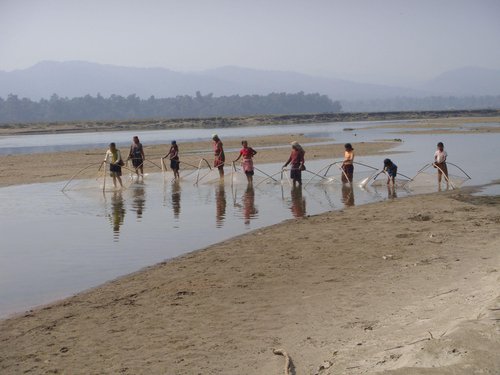
(Picture 5: Local women fishing along the Rapti River near Rihar in Banke District. Photo credit: Prem Awasthi, 2010)
To address these alarming issues, a coordinated national initiative is crucial. We must enhance our understanding, then develop a unified vision and act to combat the climate-related challenges and environmental degradation threatening our water resources. Managing water resources is pivotal, especially considering the impact on agrarian society's health and economic well-being.
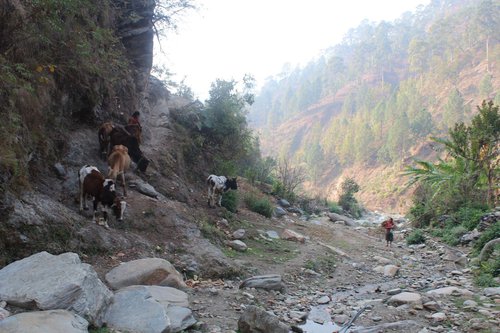
( Picture 6: A picture depicting the drying up of Simkholikhola stream in Sikhar Nagarpalika, Doti. Photo Credit: Prem Awasthi, 2016 )
Regenerating ecosystems in the higher mountains, hills, and Terai involves taking several actions, including addressing the challenges of melting glaciers because of global warming. In areas with acute water shortages, measures such as lifting water, generating ecosystems, and a forestation may be some viable options, among many. In Terai, combating desertification is paramount, requiring the ramping up the Chure conservation program and recharging the water table to prevent the drying up of water springs in the hills.
Mitigating climate change shocks on water resources requires collective efforts. Leveraging data and fostering joint initiatives can help develop effective strategies that resonate from the local to the regional level. Recognizing downstream ecological and geopolitical impacts is essential, emphasizing the need for international support to address Nepal's water crisis.
A comprehensive analysis of the water situation and its implications, in collaboration with federal entities like the Ministry of Energy, Water Resources, and Irrigation, Ministry of Forests and Environment, Ministry of Agriculture and Livestock Development, National Disaster Risk Reduction and Management Authority, as well as provincial and local level actors, is essential. This should include examining precipitation patterns, water availability outlook, and the correlation between groundwater and surface water. Targeted watershed management interventions, along with the development of conservation ponds through harvesting rain water during monsoon at the foothills of Churia are necessary to address the expected increase in groundwater depletion.
Irrigation, a critical aspect of water use in Nepal, demands scalable solutions. The involvement of national expertise, including academic institutions, private sector companies, and NGOs, is vital to creating robust analytics and data-driven solutions. Thematic groups focused on livelihoods, agriculture, and water should be established to integrate risk management components and address issues such as flooding and landslides.
To ensure water security, there is a need to make a call for action. Actions such as collecting rainwater, replenishing groundwater, and analyzing scenarios can help with planning and investment decisions at the local and provincial levels. In areas with severe water shortages, communities or local governments could leverage artificial intelligence, ICT, and remote sensing technologies to monitor water consumption in agriculture and make informed decisions regarding water demand management.
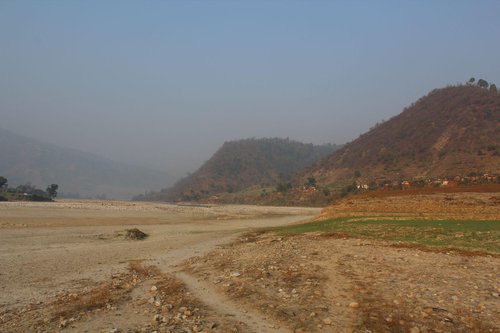
(Picture 7: Seti River in Doti against the backdrop of a dry and water-scarce Barbata village in Sikhar Nagarpalika. Photo credit: Prem Awasthi, 2019.)
The significance of groundwater cannot be overstated, as it supplies water to major cities in Nepal including Kathmandu. Groundwater management is key to ensuring a sustainable and secure water supply for urban centers. It's important for Nepal to join forces and tackle water scarcity, climate change, and disasters, not in siloes but in integrated way, collaborating government, CSOs, private sector and academia. By using strong policies and data-driven strategies and gaining support at various government levels, we can ensure a secure water for now and future generations.
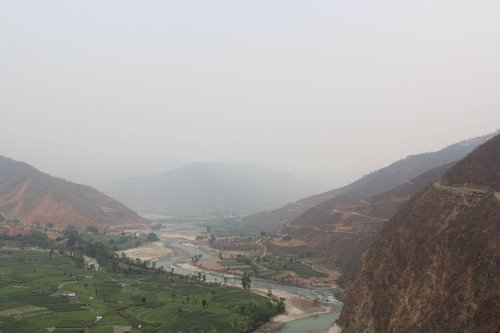
(Picture 8: A cornfield stretches alongside the Tamakoshi River, with the hills of Ramechhap in the background depicting the harsh reality of water scarcity. Photo credit: Prem Awasthi, 2017)
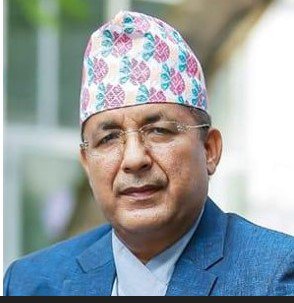
Dr. Dhruba Gautam is an independent evaluator and researcher specializing in natural resource management, climate, and disaster resilience in the Asia-Pacific region. He can be reached at drrgautam@gmail.com.
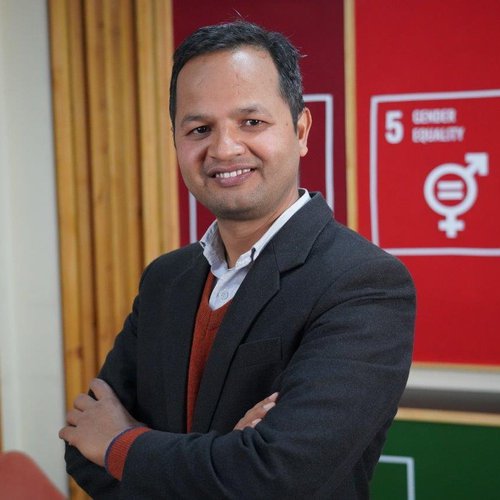
Prem Awasthi @preawasthi (X/Twitter handle) has over 20 years of experience in humanitarian coordination with the UN.













